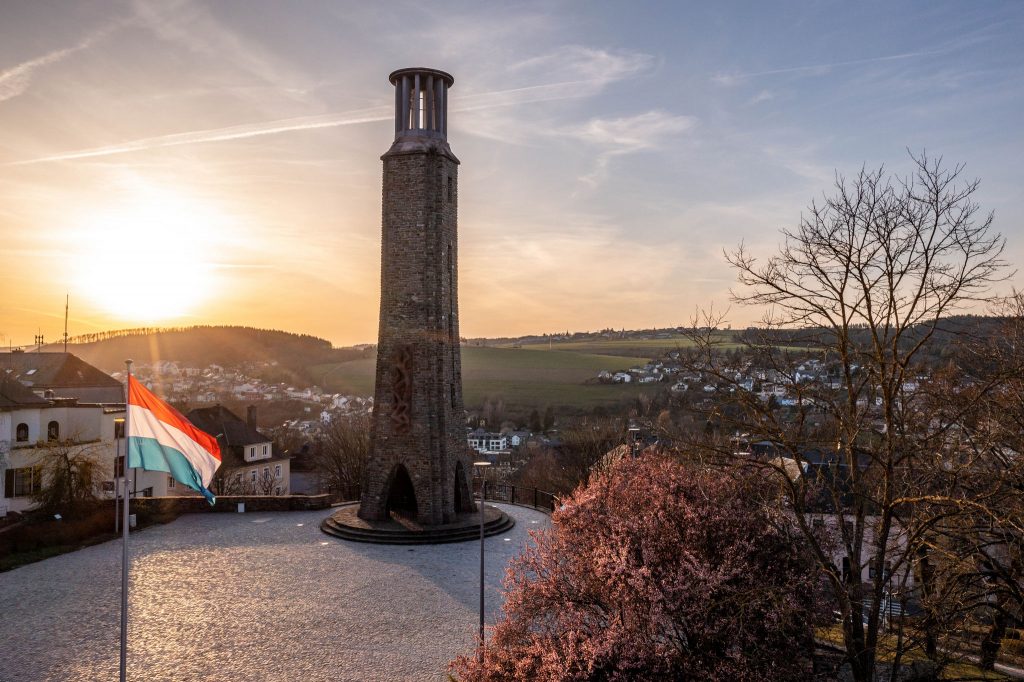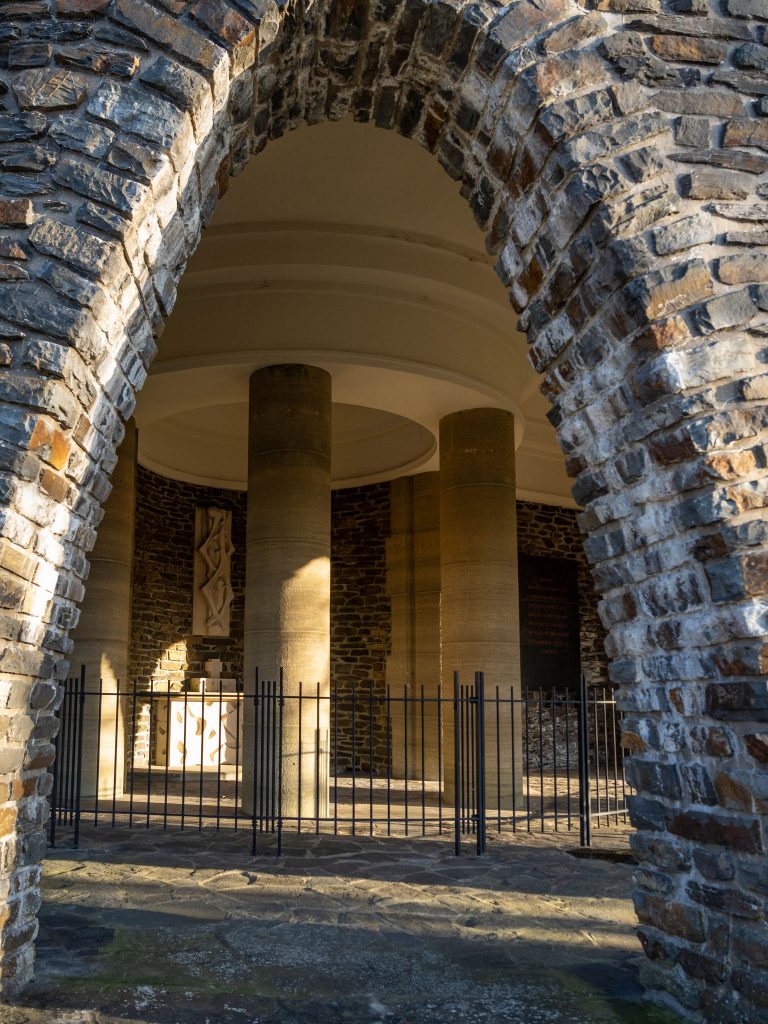
In 1942, a strike movement started in Luxembourg because of the military obligation. The Germans reacted very severely, and 21 people were killed. In the town of Wiltz, at the beginning of 1949, the Minister of the Interior Eugène Schaus decided to pay tribute to the victims of the strike.
He had a monument erected, which was financed mainly by donations from the Strike Monument Society. The first stone of the edifice is a 23m high lighthouse, installed in 1954.
Then, the realization of the monument was entrusted to the architect Roger Wercollier. First, he drew all the plans. Then, with the help of his brother Lucien Wercollier, a renowned sculptor, they created four marble bas-reliefs. These represent the struggle between the biblical David (Luxembourg) and the almighty Goliath (Nazi Germany) and the execution of the prisoners of the strike.
Finally, Lucien Wercollier imagined two other bas-reliefs for the crypt of the monument. These marble bas-reliefs depict a tree of life and death of the martyr Saint Sebastian. These works are tributes to the suffering of the resistance fighters.
